FIRST AID for PETS:
In the Palo Alto & nearby areas, call Adobe Animal Hospital - open 24/7, including advice - (650) 948-9661
To report a found pet or report loose, sick or hurt animals: Palo Alto Police & Animal Control: (650) 329-2413
Houseplants Poisonous for pets:
Here is a partial List of poisonous/dangerous plants:
Epipremnum Aureum, or "Pothos," or "Devil's Ivy"
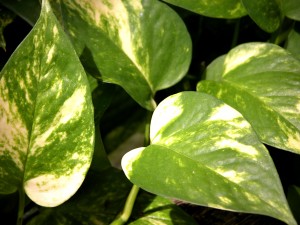
Epipremnum Aureum - poisonous plants for dogs
Wikimedia Commons/Epipremnum Aureum
Like its close cousin philodendron, pothos is a hard-to-kill houseplant with very few needs. Unfortunately, that means it can also cause the same symptoms as philodendron if ingested.
Philodendron
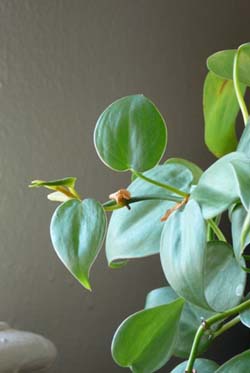
Philodendron - poisonous plants for dogs
Wikimedia Commons/LucaLuca (many varieties)
Like dieffenbachia, philodendron is a popular pick for its low maintenance needs, but if ingested, can result in swelling and burning of the mouth and tongue as well as digestive issues, spasms, and even seizures.
Crassula Ovata, or "Jade"
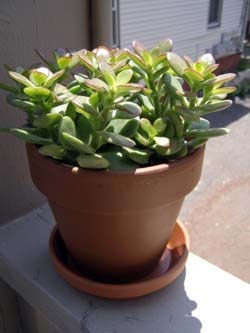
Jade - poisonous plants for dogs
Wikimedia Commons/Attilio Mileto
A rubber plant popular for its hard-to-kill properties, crassula ovata, commonly known as jade, is toxic to pets and can cause vomiting and a slow heart rate in addition to a hard-to-identify symptom: depression.
Aloe Vera
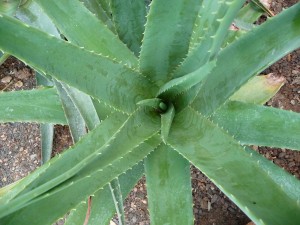
Aloe - poisonous plants for dogs
Wikimedia Commons/3268zauber
This stuff is great to have on hand for skin-soothing purposes, but it's not so fun when your dog decides to munch on a leaf. Topical use of the gel found inside the leaves is no problem, but there are other proponents of the plant that can irritate the digestive system if ingested.
Hedera Helix, or "Ivy"
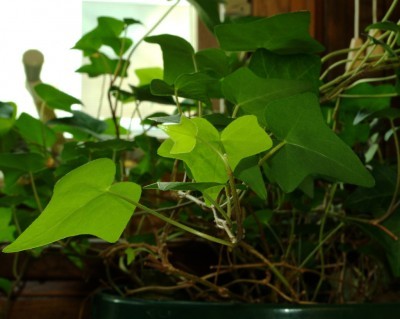
Ivy - poisonous plants for dogs
Wikimedia Commons/Chery
You know it as ivy and it sure looks pretty falling from a bookshelf, but things will get not pretty if you ingest its leaves. Symptoms range from something minor such as breathing difficulties or a rash, and can be as serious as paralysis or even coma, so make sure it's far out of reach.
Dieffenbachia, or "Dumb Cane"

Dieffenbachia - poisonous plants for dogs
Wikimedia Commons/Louise Wolff
It's the common houseplant with an uncommon name. Chewing on the leaves of this low maintenance plant can lead to severe swelling and burning of the mouth and tongue, which can in turn lead to difficulty breathing and in severe cases, death.
Cycas Revoluta, or "Sago Palm"
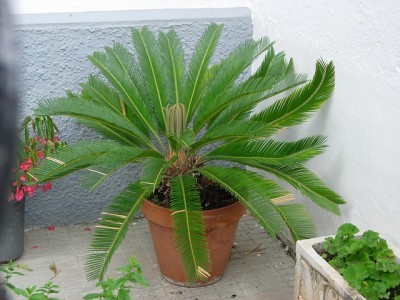
Cycas Revoluta - poisonous plants for dogs
Wikimedia Commons
Sago palm lends an instant exotic look to your home, but every single part of the plant-from the seeds and the roots all the way to the leaves-are poisonous and can cause vomiting, diarrhea, and in some cases, liver failure.
Caladium, or "Elephant Ear"
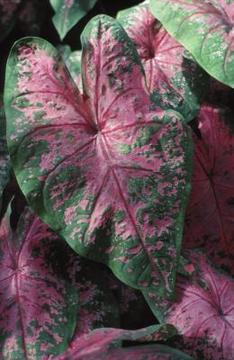
Caladium - poisonous plants for dogs
Wikimedia Commons/KENPEI
Whatever you call it, caladium is a favorite for its colorful leaves. However, it's bad news if ingested and can cause swelling and burning of the mouth and tongue, lots of drooling, and vomiting.
Dracaena Fragrans, or "Corn Plant"
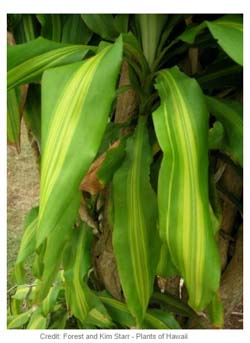
Dracaena Fragrans - poisonous houseplants for dogs
Wikimedia Commons/Jerzy Opio_a - (see various varieties)
Vomiting-sometimes with blood-is the main symptom when the corn plant is ingested, but it can also lead to appetite loss and depression.
Asparagus Fern
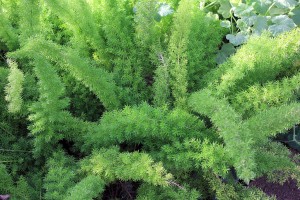
Asparagus Fern - poisonous plants for dogs
Wikimedia Commons/Yinan Chen
It doesn't just cause vomiting and diarrhea if ingested, but it can also create skin irritation if your dog is exposed to it repeatedly.
LANDSCAPING & SOME HOUSEPLANTS
There will be duplicates on this page repeated in the links. We feel it's much better to give too much information than not enough!
Here's a partial list of plants considered safe by the California Poison Control System:
- African violet
- Areca palm
- Bamboo
- Boston fern
- Cast iron plant
- Flame violet
- Fuschia
- Gardenia
- Gerber daisy
- Gloxinia
- Lady palm
- Prayer plant
- Velvet plant
- Spider plant
- Yucca
You have to be careful when considering certain varieties.
More poisonous plants:
It's often said that the way to a dog's heart is through its stomach. That may be true, but the combination of a voracious appetite, natural curiosity and indiscriminate taste can lead to trouble for our canine companions. Plants that are poisonous to dogs can be found in our homes, our yards and in the wild, and sometimes all it takes is a little bite to lead to an emergency trip to the veterinarian. Please see http://www.cnn.com/2011/LIVING/04/02/dogs.poisonous.plants.mnn/index.html for a more extensive list:
Mushrooms -- While there are plenty of great-tasting, perfectly safe mushrooms out there, dogs just don't seem capable of discerning the difference between the edible and the toxic. To be on the safe side, it's best not to allow dogs to eat any wild mushrooms at all, unless you can confidently identify the species yourself.
Marijuana -- For most people, the likelihood of your pet gaining access to marijuana -- whether on a live plant or not -- is relatively low.
After ingesting marijuana, a dog can experience symptoms like slow heart rate, lack of coordination, disorientation, drooling and tremors that can persist for up to three days.
ALERT: There are exciting new studies that suggest low grade Marijuana may help cut down the frequency of epileptic seisures in humans and dogs. Or even halt seisures once they have begun. Please do your own research on this.
Lilies -- While lilies are well-known as a serious danger to cats, certain varieties are highly toxic to dogs as well.
The peace lily, calla lily, amaryllis, lily of the valley, autumn crocus and the common houseplant, giant Dracaena or palm lily, are all deemed dangerous to dogs by the ASPCA. Ingestion of lilies can cause gastrointestinal upset, depression, anorexia and tremors.
Black walnuts -- Dropping from black walnut trees by the thousands, the nuts themselves don't contain anything that can harm your dog.
But once they start to decompose, they grow molds that can cause tremors and seizures. If you have one of these trees in your yard and your dog seems attracted to the nuts, it might be a good idea to rake them up on a regular basis.
Sago palm -- Often used in landscaping and as houseplants, sago palms develop seed pods that are often very tempting to dogs.
Unfortunately, the whole plant and the seeds in particular contain a potent toxin called cycasin that can be fatal, even if the dog only eats a single seed. Ingestion of any part or amount of this plant warrants immediate emergency treatment.
Azalea -- A member of the widely toxic genus rhododendron, the azalea is found in many varieties all over the United States and is commonly used as an ornamental flowering shrub in landscaping.
Ingestion of just a few leaves can cause serious issues like digestive upset, drooling, loss of appetite, weakness and leg paralysis. In some cases, eating azalea can lead to coma or death.
Daffodils -- Among the first blooms to herald the arrival of spring, daffodils are a cheerful addition to the garden, but they contain poisonous alkaloids that can cause vomiting, excessive salivation, diarrhea, convulsions, tremors and heart problems.
The bulbs are the most dangerous part of the plant. Other common names for the daffodil include narcissus, jonquil and paper white.
Another large list of plants poisonous to animals

